
There are many causes of generalized itching. Allergies are a very common cause of itching. Allergies to oral and topical medications, foods, cosmetics, fragrances, metals, shampoos, nail polish, latex, poison ivy, poison oak, and poison sumac are just some of the common allergies that may cause itching. Contact dermatitis and eczema, (i.e., atopic dermatitis) are 2 other allergic conditions that may cause itching. Although allergies may be the cause of a lot of individual’s itching, it by no means the only reason for the pruritus. There are a variety of underlying conditions that may cause a person to have itching even though it may not be the most common symptom of the disease. Some of the underlying conditions that can cause itching may include diabetes mellitus, hepatitis B, hepatitis C, kidney disease, thyroid disease, malignancy, iron deficiency anemia, dyshidrotic eczema, HIV, folliculitis, ringworm, seborrheic dermatitis, neurodermatitis, shingles, xerosis (i.e., dry skin), psoriasis, bed bugs, parasitic infections, pregnancy, as well as many others. It is important that a cause be identified so that either the allergen is avoided or the management can be focused on the underlying condition responsible for the itching.
The diagnosis of generalized itching begins with a comprehensive history and physical examination. By performing a comprehensive history, the allergist is trying to ascertain the cause of the itching. It is common for a patient to forget or not bring up pertinent information that can help the allergist figure out the cause, so it is important for the allergist to ask a variety of questions in order to try to establish a cause or trigger of the pruritus. Asking questions such as, “Have been on any recent antibiotics or new medications?” or “Do you take aspirin or nonsteroidal anti-inflammatory drugs (NSAIDs)?” are good questions because many patients will not volunteer this information because they do not feel that it is important enough to mention to the physician. In reality, antibiotics, new medications, aspirin, and NSAIDs use are very common reasons for generalized itching. If no obvious allergen can be identified and the itching has lasted 6 weeks or more, looking for an underlying condition is the next step. This is usually done by blood tests.
The treatment of generalized itching is directed at avoiding the offending agent. If for example a new medication appears to be causing the itching, the medication should be stopped or changed to another appropriate medication. If it is a certain cosmetic or a specific food, then obviously the cosmetic or food should be avoided. In addition, using oral H1 blockers (i.e., antihistamines) is the most common treatment. Sometimes, adding an H2 blocker and/or a leukotriene antagonist to the Hi blocker is needed. Rarely, oral corticosteroids are needed for severe cases. Topical creams/ointments have been used with limited success. In most cases, medications may only be needed for 1 or 2 weeks, but can be necessary is some individuals for several years. If the itching persists for more than 6 weeks and bloodwork is obtained in order to rule out underlying conditions, then treating the underlying condition may in fact get rid of the itching.
The board certified allergy doctors at Black & Kletz Allergy have been diagnosing and treating generalized itching for more than 50 years. We treat both pediatric and adult patients. Black & Kletz Allergy has offices in Washington, DC, McLean, VA (Tysons Corner, VA), and Manassas, VA. All 3 of our offices have on-site parking. For further convenience, our Washington, DC and McLean, VA offices are Metro accessible. Our McLean office location offers a complementary shuttle that runs between our office and the Spring Hill metro station on the silver line. To schedule an appointment, please call our office or alternatively, you can click Request an Appointment and we will respond within 24 hours by the next business day. If you suffer from generalized itching, hives, swelling episodes, or any other allergic condition, the allergy specialists at Black & Kletz Allergy are happy to help you. We are dedicated to providing you with the highest quality allergy care in a relaxed, considerate, and professional environment.


 Anaphylaxis is an acute, severe, and life-threatening allergic reaction. The most common triggers for anaphylaxis include allergenic foods, medications, and insect stings. Symptoms usually begin within a few minutes of exposure of the triggering agents. Initially, the symptoms characteristically involve the skin which typically causes itching and hives followed by swelling of the soft tissues. Unless treated, the reaction may rapidly progress and may involve other organ systems (e.g., respiratory, gastrointestinal, cardiovascular) resulting in symptoms such as shortness of breath, wheezing, coughing, nausea, vomiting, abdominal pain, dizziness, drop in blood pressure, and/or loss of consciousness.
Anaphylaxis is an acute, severe, and life-threatening allergic reaction. The most common triggers for anaphylaxis include allergenic foods, medications, and insect stings. Symptoms usually begin within a few minutes of exposure of the triggering agents. Initially, the symptoms characteristically involve the skin which typically causes itching and hives followed by swelling of the soft tissues. Unless treated, the reaction may rapidly progress and may involve other organ systems (e.g., respiratory, gastrointestinal, cardiovascular) resulting in symptoms such as shortness of breath, wheezing, coughing, nausea, vomiting, abdominal pain, dizziness, drop in blood pressure, and/or loss of consciousness. As the Summer marches on and we are now in the month of August, many allergy sufferers are about to get ready for another foe, namely ragweed. Usually about August 15th of every year, ragweed pollen begins to blanket the
As the Summer marches on and we are now in the month of August, many allergy sufferers are about to get ready for another foe, namely ragweed. Usually about August 15th of every year, ragweed pollen begins to blanket the  Contact dermatitis
Contact dermatitis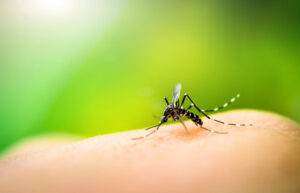 Now that it is Summer, mosquitoes are becoming more prevalent in the Washington, DC, Northern Virginia, and Maryland region. Mosquitoes are flying insects that tend to be more widespread where there is standing water. They are more active early in the morning and early in the evening. Female mosquitoes typically lay their eggs in stagnant water. Only the female mosquito bites and feeds on human blood, as they need this blood in order to produce their eggs. Male mosquitoes, on the other hand, feed on water and nectar. Mosquitoes are considered pests and they are a nuisance to almost everyone who comes in contact with these annoying insects. When a person is bitten, the mosquito injects its saliva into the skin which contains proteins that prevent the human blood from clotting. This allows the blood to be transferred to the mosquito’s mouth without clotting. For the most part, mosquitoes bite people and animals without any symptoms or only very mild local symptoms. For many others however, a mosquito bite can cause a great deal of misery, mostly consisting of irritation, itching, redness, and/or swelling at the site of the bite. In very sensitive individuals, the swelling and redness can become quite large. Occasionally this redness and swelling is accompanied by bruising and/or blisters.
Now that it is Summer, mosquitoes are becoming more prevalent in the Washington, DC, Northern Virginia, and Maryland region. Mosquitoes are flying insects that tend to be more widespread where there is standing water. They are more active early in the morning and early in the evening. Female mosquitoes typically lay their eggs in stagnant water. Only the female mosquito bites and feeds on human blood, as they need this blood in order to produce their eggs. Male mosquitoes, on the other hand, feed on water and nectar. Mosquitoes are considered pests and they are a nuisance to almost everyone who comes in contact with these annoying insects. When a person is bitten, the mosquito injects its saliva into the skin which contains proteins that prevent the human blood from clotting. This allows the blood to be transferred to the mosquito’s mouth without clotting. For the most part, mosquitoes bite people and animals without any symptoms or only very mild local symptoms. For many others however, a mosquito bite can cause a great deal of misery, mostly consisting of irritation, itching, redness, and/or swelling at the site of the bite. In very sensitive individuals, the swelling and redness can become quite large. Occasionally this redness and swelling is accompanied by bruising and/or blisters.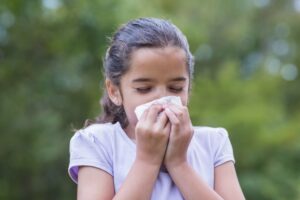 Grass pollen allergy is a very common environmental allergy. Grass pollinates in at different time of the year depending on where in the U.S. one is located. In the Northeastern and Mid-Atlantic regions of the U.S., grass pollinates from the Spring through the Summer. In the
Grass pollen allergy is a very common environmental allergy. Grass pollinates in at different time of the year depending on where in the U.S. one is located. In the Northeastern and Mid-Atlantic regions of the U.S., grass pollinates from the Spring through the Summer. In the 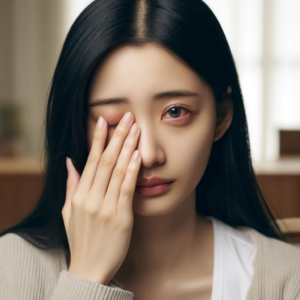 In order to understand conjunctivitis, one must first understand a little about the anatomy of the eye as well as a little physiology of the way eyes become lubricated. The conjunctiva is the thin transparent membrane that lines the inside of the eyelids (i.e., palpebral area) and the front of the eyeballs (i.e., bulbar area). The lacrimal glands, which are located in the outer corners of the eyes, secrete tears which lubricate the eyes. These tears then drain into the nose via tear ducts from the inner corners of the eyes. Inflammation of the conjunctival membrane is called conjunctivitis. There are several conditions which cause inflammation of the conjunctiva which are as follows:
In order to understand conjunctivitis, one must first understand a little about the anatomy of the eye as well as a little physiology of the way eyes become lubricated. The conjunctiva is the thin transparent membrane that lines the inside of the eyelids (i.e., palpebral area) and the front of the eyeballs (i.e., bulbar area). The lacrimal glands, which are located in the outer corners of the eyes, secrete tears which lubricate the eyes. These tears then drain into the nose via tear ducts from the inner corners of the eyes. Inflammation of the conjunctival membrane is called conjunctivitis. There are several conditions which cause inflammation of the conjunctiva which are as follows: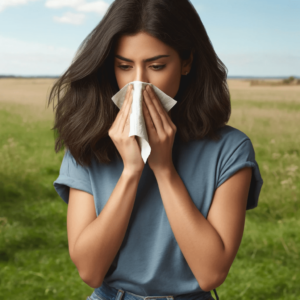 Summertime in the metropolitan
Summertime in the metropolitan  The symptoms of asthma may include a feeling of chest tightness or heaviness in the chest, wheezing (i.e., high-pitched whistling type of noise during breathing), coughing, and/or shortness of breath/difficulty in breathing. The frequency of these symptoms varies depending on the severity of the asthma. The symptoms can be intermittent or persistent. The severity is also classified as either mild, moderate, or severe. Asthma usually begins in childhood, although it can also be diagnosed for the first time in adulthood. The course of asthma is variable. The symptoms can be mild, moderate, severe, frequent, infrequent, intermittent, and/or persistent at various times throughout one’s life.
The symptoms of asthma may include a feeling of chest tightness or heaviness in the chest, wheezing (i.e., high-pitched whistling type of noise during breathing), coughing, and/or shortness of breath/difficulty in breathing. The frequency of these symptoms varies depending on the severity of the asthma. The symptoms can be intermittent or persistent. The severity is also classified as either mild, moderate, or severe. Asthma usually begins in childhood, although it can also be diagnosed for the first time in adulthood. The course of asthma is variable. The symptoms can be mild, moderate, severe, frequent, infrequent, intermittent, and/or persistent at various times throughout one’s life. As we enter into Spring, not only should allergy-sensitive individuals be on the lookout for those annoying pollen allergy symptoms, but they should be aware of their surroundings for venomous flying insects. In the Washington, DC, Maryland, and Northern Virginia metropolitan area, the most common venomous flying insects are honey bees, wasps, yellow jackets, white-faced hornets, and yellow-faced hornets. The summer months are the peak months that insect stings occur. In the U.S., about 3% of the population experience allergic reactions to the venom of flying insect stings. Approximately a half a million individuals seek emergency room care every year for insect sting reactions in the U.S. Unfortunately, there are roughly 50 deaths reported each year from these insect sting reactions.
As we enter into Spring, not only should allergy-sensitive individuals be on the lookout for those annoying pollen allergy symptoms, but they should be aware of their surroundings for venomous flying insects. In the Washington, DC, Maryland, and Northern Virginia metropolitan area, the most common venomous flying insects are honey bees, wasps, yellow jackets, white-faced hornets, and yellow-faced hornets. The summer months are the peak months that insect stings occur. In the U.S., about 3% of the population experience allergic reactions to the venom of flying insect stings. Approximately a half a million individuals seek emergency room care every year for insect sting reactions in the U.S. Unfortunately, there are roughly 50 deaths reported each year from these insect sting reactions. Immunoglobulin E (IgE) is an antibody that mediates allergic reactions. It interacts with the proteins (i.e., antigens, allergens) during an allergic reaction causing various chemicals and substances to be released into the bloodstream. It is those chemicals and mediators such as histamine, leukotrienes, prostaglandins, etc. that are responsible for the clinical manifestations of allergic reactions. The allergic reactions range in severity from mild itching to life-threatening
Immunoglobulin E (IgE) is an antibody that mediates allergic reactions. It interacts with the proteins (i.e., antigens, allergens) during an allergic reaction causing various chemicals and substances to be released into the bloodstream. It is those chemicals and mediators such as histamine, leukotrienes, prostaglandins, etc. that are responsible for the clinical manifestations of allergic reactions. The allergic reactions range in severity from mild itching to life-threatening  Nonsteroidal anti-inflammatory drugs (NSAID’s) are a group of medications related to aspirin. The group includes commonly used drugs such as ibuprofen (i.e., Motrin, Advil), naproxen (i.e., Aleve, Naprosyn), diclofenac (i.e., Voltaren), etodolac, (i.e., Lodine), among others. These agents are widely used in order to reduce inflammation (e.g., decrease pain and reduce swelling of joints in various forms of arthritis). They also help reduce fever caused by infections as well as relieve discomfort after injuries.
Nonsteroidal anti-inflammatory drugs (NSAID’s) are a group of medications related to aspirin. The group includes commonly used drugs such as ibuprofen (i.e., Motrin, Advil), naproxen (i.e., Aleve, Naprosyn), diclofenac (i.e., Voltaren), etodolac, (i.e., Lodine), among others. These agents are widely used in order to reduce inflammation (e.g., decrease pain and reduce swelling of joints in various forms of arthritis). They also help reduce fever caused by infections as well as relieve discomfort after injuries. Well, it is almost Spring again. If you are one of those individuals with Spring allergies, you know that it is time for those miserable allergy symptoms to reappear unless you do something about it. The primary cause of Spring allergies is the tree pollen, although secondary allergens often include molds. The classic symptoms of Spring allergies may include sneezing, runny nose, nasal congestion, post-nasal drip, itchy nose, sinus headaches, fatigue, itchy eyes, watery eyes, and/or redness of the eyes. In addition, some individuals, especially those with
Well, it is almost Spring again. If you are one of those individuals with Spring allergies, you know that it is time for those miserable allergy symptoms to reappear unless you do something about it. The primary cause of Spring allergies is the tree pollen, although secondary allergens often include molds. The classic symptoms of Spring allergies may include sneezing, runny nose, nasal congestion, post-nasal drip, itchy nose, sinus headaches, fatigue, itchy eyes, watery eyes, and/or redness of the eyes. In addition, some individuals, especially those with 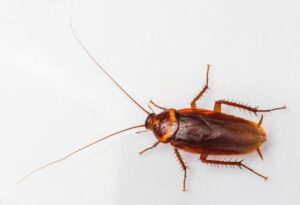 It is estimated that approximately 33% of people are allergic to cockroaches. Cockroaches are quite allergenic, which may attribute to the high number of individuals who are allergic to these nasty insects. There are over 3,500 species of cockroaches worldwide. Cockroaches have been around for more than 300 million years. They have adapted to living in all types of climates and are found all over the world. Cockroaches prefer to live in moist and warmer environments, so it quite common for them to live in bathrooms, basements, and kitchens. They are nocturnal, so they are rarely seen during the day.
It is estimated that approximately 33% of people are allergic to cockroaches. Cockroaches are quite allergenic, which may attribute to the high number of individuals who are allergic to these nasty insects. There are over 3,500 species of cockroaches worldwide. Cockroaches have been around for more than 300 million years. They have adapted to living in all types of climates and are found all over the world. Cockroaches prefer to live in moist and warmer environments, so it quite common for them to live in bathrooms, basements, and kitchens. They are nocturnal, so they are rarely seen during the day.









